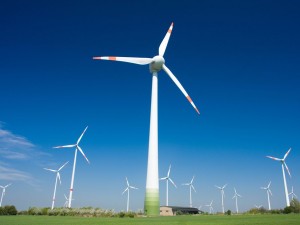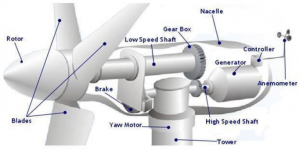Civil Engineering System: Wind Turbine

Wind turbines have a great impact and value for our society nowadays, as renewable energy sources play a more and more important role and fossil resources are limited and do not provide a sustainable solution in the question of increasing global energy demand.
Even though wind turbines are considered as least dangerous power generation technology, in extreme and seldom situations a blade can break and fly up to 300 meters and cause severe damage . Therefore, a problem domain will be the deterioration and failure of a wind turbine during lifetime. In order to concretize the domain one should be aware of the existence of different types of wind turbines. There are for example offshore and onshore wind turbines, which are exposed to different loads. Furthermore the blades can be arranged on a horizontal or vertical axis. Here onshore wind turbines with a horizontal axis are being analyzed because they are the most common.

During its lifetime a wind turbine must withstand extreme load. In general, the lifespan is designed for at least 20 or 30 years. This involves a safe-life design for the calculation of all loads. However, even in high quality products failures are not inevitable. One can broadly distinguish two types of failure reasons, which often occur simultaneously:
- poorly calculated or designed components which will lead to failures in each product of a series of the same design
- individual imperfection of a component material or its construction
The other civil engineering systems for the integrated system are a heating system and a multi-storey car park. All of these products are incorporated in overall maintenance strategies and are beeing assessed by a mulit- objective optimization.